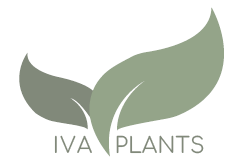Echinacea is often the first herb people think of when it comes to immune support, but there’s more to it than that. With its vivid purple flowers and earthy, slightly bitter taste, this plant has a long tradition of use and a reputation that’s both deserved and sometimes misunderstood. If you’ve ever seen it listed in a tea blend and wondered why it’s there, here’s what’s worth knowing.

1. It grows natively in North America
Echinacea isn’t an exotic import. Indigenous peoples across North America used it for generations in practical, everyday ways. It was applied to bites, used for colds, and even as a general strengthener when the body felt under pressure.
2. Not all echinacea species work the same way
The two most common types used in herbal remedies are Echinacea purpurea and Echinacea angustifolia. They share similarities but also have distinct compounds. Purpurea is more often used in teas and infusions. Angustifolia tends to appear in concentrated extracts.
3. It supports the immune response at early stages
Echinacea is best taken right at the start of symptoms. Some studies show it may help reduce the duration and intensity of colds when used early. It’s not a long-term tonic but rather short-term support when the body begins to feel challenged.
4. Different parts of the plant have different strengths
The root is usually stronger in action and taste. It’s used in tinctures and stronger extracts. The leaves and flowers are gentler, which makes them suitable for teas. Together, they give a broader herbal profile.
5. It isn’t for daily use
Unlike herbs you might take every day, echinacea is more effective in shorter periods. Herbalists usually recommend taking it for up to ten days when needed, then pausing. This respects the way the plant interacts with the body’s immune rhythms.
6. That tingling sensation is real
If you’ve ever felt a numb or tingling effect after taking echinacea extract, it’s from compounds called alkamides. It’s a sign that the plant is active. In tea, this effect is much milder or may not appear at all.
7. It combines well with other immune herbs
Echinacea works quietly in a blend. It doesn’t take over the taste but supports the structure of the tea. You’ll often find it alongside elderberries, lemon verbena, rosehip, or ginger. It belongs there for more than just tradition.
Echinacea is one of those plants that people recognise but don’t always understand. It’s not a miracle herb and it’s not meant to be used all the time. But when chosen wisely and used with care, it can offer a real sense of support just when you need it. It’s a plant that reminds the body how to respond, not one that tries to do all the work for it.







I first came across IVA Plants and Alex their founder at my local monthly Artisan market and decided to try the Sleep Well tea and the Rose Garden Tea. I was very impressed with the lovely aroma and the quality of the ingredients. There is an online shop but I thought I would head down to the market again to stock up. This time I bought dried Chamomile flowers, Rose buds and a Houjicha roasted greentea that she suggested for me as it is lower in caffeine. I would highly recommend all of the purchases I have made.